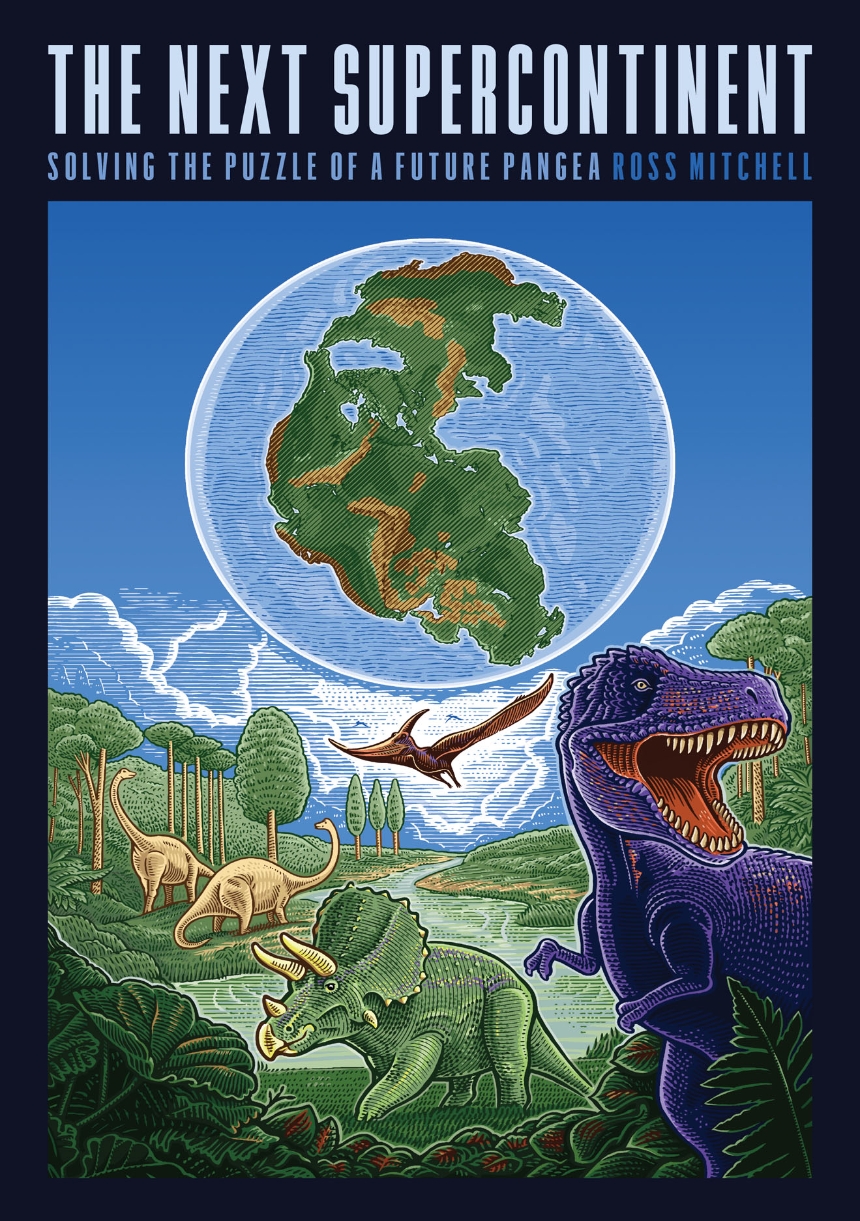The Next Supercontinent
Solving the Puzzle of a Future Pangea
An internationally recognized scientist shows that Earth’s separate continents, once together in Pangea, are again on a collision course.
You’ve heard of Pangea, the single landmass that broke apart some 175 million years ago to give us our current continents, but what about its predecessors, Rodinia or Columbia? These “supercontinents” from Earth’s past provide evidence that land repeatedly joins and separates. While scientists debate what that next supercontinent will look like—and what to name it—they all agree: one is coming.
In this engaging work, geophysicist Ross Mitchell invites readers to remote (and sometimes treacherous) lands for evidence of past supercontinents, delves into the phenomena that will birth the next, and presents the case for the future supercontinent of Amasia, defined by the merging of North America and Asia. Introducing readers to plate tectonic theory through fieldwork adventures and accessible scientific descriptions, Mitchell considers flows deep in the Earth’s mantle to explain Amasia’s future formation and shows how this developing theory can illuminate other planetary mysteries. He then poses the inevitable question: how can humanity survive the intervening 200 million years necessary to see Amasia?
An expert on the supercontinent cycle, Mitchell offers readers a front-row seat to a slow-motion mystery and an ongoing scientific debate.
304 pages | 56 halftones | 5 1/2 x 8 1/2 | © 2023
Earth Sciences: General Earth Sciences, Geology
Reviews
Table of Contents
Excerpt
In this book, I will layout the leading contenders for the geography of the next supercontinent, explore the modern mysteries that still surround plate tectonics, and explain the science behind predicting how continents move. Alas, predicting the next supercontinent is not as simple as understanding today’s movements and pressing fast-forward. Tectonic plates move slowly, at about the same speed that our fingernails grow. But GPS is now precise enough to detect this slow motion. And residents of Pompeii, San Francisco, and Fukushima can tell you that the effects of those movements are hard to perceive—until they are devastating. Volcanoes, earthquakes, and tsunamis are evidence of plate tectonics’ power. So is geography—just look at the abrupt bend, or kink, in the chain of the Hawaiian Islands. These islands formed a straight chain of semicontinuous volcanic activity for about 30 million years, until a sudden pivot occurred over the course of a few million years or less. The bend is a record of that pivot. Why did this happen? The tectonic plates are all interconnected, so any change in the movement of one plate causes adjustments in them all. Thirty million years ago, Australia broke away from Antarctica and started its current path north across the Pacific Ocean. Whereas the Pacific plate had been moving directly north before the bend, Australia’s breakaway in the western Pacific caused the motion of the Pacific plate to deflect toward the northwest after the bend. No plate is moving alone and each plate interacts with its neighbors along their shared boundaries. Plate tectonics is the dance of all plates and the seven major continents (or eight, depending on how you define them) they carry, constituting a global choreography, with dozens of smaller plates in between.
The earliest understanding of plate movement was the sixteenth-century idea of “continental drift”—that the continents migrated like rafts slowly into their current position, floating on an imperceptible layer within the earth. But this theory was largely written off because it was not clear what sort of mysterious substratum the continental rafts would be floating on. By the beginning of the last century, we still knew very little about the interior of the earth. Eventually, as seismology— the study of inner Earth using the vibrations generated from earthquakes— developed and submarines were put to good use after World War II to map the seafloor, the hypothesis of plate tectonics changed geology forever. Breaking Earth’s seemingly rigid surface into an interlocking mosaic of different plates that pushed and pulled each other provided a unified explanation for the origin of many of Earth’s great geological features, such as mountains, volcanoes, earthquakes, and oceans. But as exciting as the early plate tectonic revolution was, it didn’t have all the answers. For example, the hot interior of the earth was likely convecting, in a movement driven by temperature changes, just like the circulation of air in the atmosphere; but how these deep convective cells related to the push and pull of the plates at Earth’s surface would remain elusive for decades—and the details of this interaction are still unsolved.
